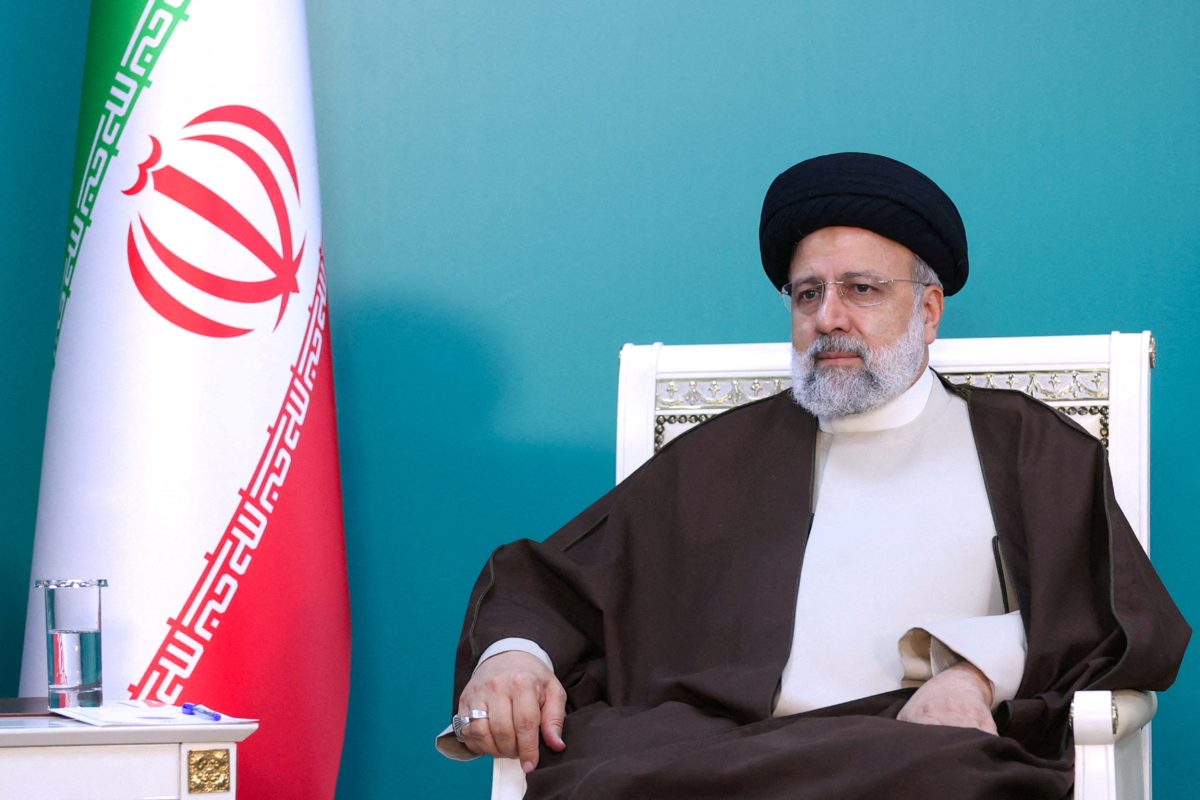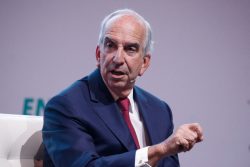DUBAI, (Reuters) – Iranian President Ebrahim Raisi, a hardliner seen as a potential successor to Supreme Leader Ayatollah Ali Khamenei, was killed in a helicopter crash in mountainous terrain near the Azerbaijan border, officials and state media said today.
The charred wreckage of the helicopter which crashed on Sunday carrying Raisi, Foreign Minister Hossein Amirabdollahian and six other passengers and crew was found early today after an overnight search in blizzard conditions.
Iran’s Supreme Leader Ayatollah Ali Khamenei, who holds ultimate power with a final say on foreign policy and Iran’s nuclear programme, said First Vice President Mohammad Mokhber, would take over as interim president, the official IRNA news agency reported.
“I announce five days of public mourning and offer my condolences to the dear people of Iran,” Khamenei said in a statement. Mokhber, like Raisi, is seen as close to Khamenei.
Under the Islamic Republic’s constitution, a new presidential election must be held within 50 days.
Khamenei had earlier sought to reassure Iranians, saying there would be no disruption to state affairs.
The crash comes at a time of growing dissent within Iran over an array of political, social and economic crises. Iran’s clerical rulers face international pressure over Tehran’s disputed nuclear programme and its deepening military ties with Russia during the war in Ukraine.
Since Iran’s ally Hamas attacked Israel on Oct. 7, provoking Israel’s assault on Gaza, conflagrations involving Iran-aligned groups have erupted throughout the Middle East.
A long “shadow war” between Iran and Israel broke into the open last month with tit-for-tat exchanges of drone and missile fire.
State media reported that images from the site showed the U.S.-made Bell 212 helicopter slammed into a mountain peak, although there was no official word on the cause of the crash. The dead also included the governor of East Azerbaijan Province and a senior imam from Tabriz city.
“President Raisi, the foreign minister and all the passengers in the helicopter were killed in the crash,” a senior Iranian official had earlier told Reuters, asking not to be named because of the sensitivity of the matter.
An Israeli official told Reuters it was not involved in the crash. “It wasn’t us,” said the official, who requested anonymity.
MESSAGES OF CONDOLENCE
The helicopter went down in Varzeqan region north of Tabriz, state news agency IRNA reported, as Raisi returned from an official visit to the border with Azerbaijan in Iran’s northwest.
Raisi, 63, was elected president in 2021, and since taking office has ordered a tightening of morality laws, overseen a bloody crackdown on anti-government protests and pushed hard in nuclear talks with world powers.
Messages of condolences came from Iran’s regional neighbours including the leaders of Syria, Egypt, India, Iraq and Pakistan, as well as the European Union, Italy and Russia.
Iran-backed militant group Hamas, fighting Israeli forces in Gaza with Tehran’s support, issued a statement expressing sympathy to the Iranian people for “this immense loss.”
Lebanon’s Iran-backed Hezbollah group and the Houthi rebels in Yemen also issued statements praising Raisi and mourning his death.
Meanwhile, the exiled opposition group, the National Council of Resistance of Iran, described his death in a statement as a “monumental and irreparable strategic blow” to the Islamic Republic.
PRAYERS, SEARCHES
Rescue teams fought blizzards and difficult terrain through the night to reach the wreckage in the early hours of today.
“With the discovery of the crash site, no signs of life have been detected among the helicopter’s passengers,” the head of Iran’s Red Crescent, Pirhossein Kolivand, told state TV.
Earlier, the national broadcaster had stopped all regular programming to show prayers being held for Raisi across the country.
Video showed a rescue team, wearing bright jackets and head torches, huddled around a GPS device as they searched a pitch-black mountainside on foot in a blizzard.
Several countries had earlier expressed concern and offered assistance.
The White House said U.S. President Joe Biden had been briefed on reports about the crash. China said it was deeply concerned. The European Union offered emergency satellite mapping technology.
HARDLINER, POSSIBLE SUCCESSOR TO KHAMENEI
In Iran’s dual political system, split between the clerical establishment and the government, it is Raisi’s 85-year-old mentor Khamenei, supreme leader since 1989, who holds decision-making power on all major policies.
For years, many have seen Raisi as a strong contender to succeed Khamenei, who has endorsed Raisi’s main policies.
Raisi’s victory in a closely managed election in 2021 brought all branches of power under the control of hardliners, after eight years when the presidency had been held by pragmatist Hassan Rouhani and a nuclear deal negotiated with powers including Washington.
However, Raisi’s standing may have been dented by widespread protests against clerical rule and a failure to turn around Iran’s economy, hamstrung by Western sanctions.
Raisi had been at the Azerbaijani border on Sunday to inaugurate the Qiz-Qalasi Dam, a joint project. Azerbaijan’s President Ilham Aliyev, who said he had bid a “friendly farewell” to Raisi earlier in the day, had offered assistance in the rescue.









